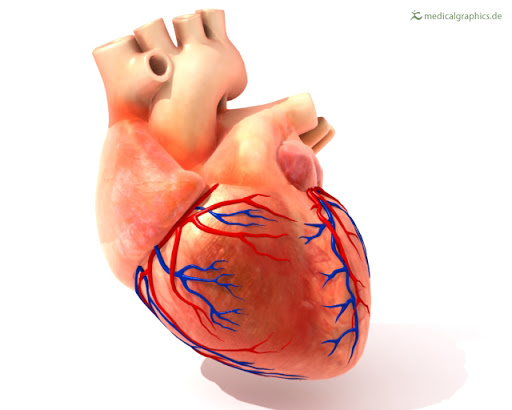Abstract
Dysfunction of either the right or left ventricle can lead to heart failure (HF) and subsequent morbidity and mortality. We performed a genome-wide association study (GWAS) of 16 cardiac magnetic resonance (CMR) imaging measurements of biventricular function and structure. Cis-Mendelian randomization (MR) was used to identify plasma proteins associating with CMR traits as well as with any of the following cardiac outcomes: HF, non-ischemic cardiomyopathy, dilated cardiomyopathy (DCM), atrial fibrillation, or coronary heart disease. In total, 33 plasma proteins were prioritized, including repurposing candidates for DCM and/or HF: IL18R (providing indirect evidence for IL18), I17RA, GPC5, LAMC2, PA2GA, CD33, and SLAF7. In addition, 13 of the 25 druggable proteins (52%; 95% confidence interval, 0.31 to 0.72) could be mapped to compounds with known oncological indications or side effects. These findings provide leads to facilitate drug development for cardiac disease and suggest that cardiotoxicities of several cancer treatments might represent mechanism-based adverse effects.
INTRODUCTION
Dysfunction of the right or left ventricle (RV, LV), arising due to intrinsic heart muscle disease, coronary artery disease, or pulmonary or systemic hypertension, leads to the clinical syndrome of heart failure (HF) (1). HF can be accompanied by ventricular hypertrophy or dilation (depending on the cause) and with impairment of either cardiac contraction or relaxation, leading to HF syndromes defined according to impaired or preserved ejection fraction (EF).
Notwithstanding the recent advance offered by SGLT2 inhibitors for the treatment of HF, drug development for cardiac disease has been met with high failure rates, often occurring during costly late-stage clinical testing (2–4). These late-stage failures are indicative of the poor predictive potential of preclinical experiments for cardiac drug target identification. This is complicated further by the considerable phenotypic heterogeneity that underlies diagnoses such as HF (5), potentially resulting in compounds failing for futility that may genuinely benefit a subset of patients. Conversely, several drugs—predominantly for cancer indications—have been found to cause cardiotoxicity, which may confront patients with treatment-induced heart problems (6).
Cardiac magnetic resonance (CMR) imaging is the gold standard for quantification of biventricular function and morphology, and has become an integral diagnostic modality for cardiac disease (see table S1). Here, we used CMR images from the UK Biobank (UKB) to extract measures from both LV and RV using a purpose-built deep-learning algorithm (7).
Proteins constitute most drug targets (8), which are increasingly analyzed through high-throughput assays measuring the levels of hundreds to thousands of (plasma) proteins (9). To leverage proteins and CMR measurements for drug target validation, we have developed an analytical framework (10) to perform drug target analyses using human genetic data. Specifically, through two-sample Mendelian randomization (MR), one can anticipate the on-target effect a drug target protein will have on disease-relevant traits such as CMR measurements. Previously, this approach has been extensively validated for cardiovascular drug targets (11–19).
To prioritize circulating plasma proteins for their involvement with LV and RV traits, we first performed a genome-wide association study (GWAS) on 16 CMR traits measured in up to 36,548 UKB subjects. Subsequently, we format-normalized protein quantitative trait loci (pQTLs) data sourced from three independent GWAS involving cross-platform measurement of plasma protein concentrations using Somalogic (9), Olink (20), and Luminex (21) assays spanning 2900+ plasma proteins. Drug target MR was used to prioritize proteins on their likely causal contribution to CMR traits, as well as cardiac outcomes including HF, dilated cardiomyopathy (DCM), and atrial fibrillation (AF). Repurposing opportunities were identified by extracting cardiovascular indications and side effects from ChEMBL (22) and the British National Formulary (BNF). Results were further annotated with tissue-specific mRNA expression data from the Human Protein Atlas (HPA) database (23), and with protein-protein interaction data information from IntAct (24) (see Fig. 1).
RESULTS
UKB participants with LV and RV CMR measurements
CMR measurements were obtained from a sample of up to 36,548 UKB subjects using an extensively validated deep-learning approach (7), excluding people with preexisting (cardiac) disease (figs. S1 and S2 and tables S1 and S2). Specifically, the following CMR measurements were extracted: structural measures on end-diastolic, end-systolic, or stroke volumes (EDV, ESV, SV), end-diastolic mass (EDM), and LV mass to EDV ratio (LV-MVR), and functional measures on EF, peak ejection rate (PER), and peak (atrial) filling rates (PAFR, PFR).
On average, subjects were 63.9 (SD, 7.6) years old, and 18,879 (51.8%) were women. Participants had a mean systolic blood pressure (SBP) of 138.2 mmHg (SD, 18.4), a mean diastolic blood pressure (DBP) of 78.6 mmHg (SD, 10.0), and a mean heart rate of 62.5 beats per minute (bpm) (SD, 10.2) (see table S3).
Genomic loci associated with LV and RV CMR measurements
We performed a GWAS on 16 CMR traits, leveraging genotyped and imputed variants from the Affymetrix BiLEVE and Axiom arrays, and applying BOLT-LMM conditional on age, sex, body surface area (BSA), SBP, genotype measurement batch, 40 principal components (PCs), and assessment center. This resulted in 91 unique lead variants (Fig. 2 and tables S4 and S5), which passed the standard GWAS significance threshold of 5.00 × 10−8, and 32 variants passing a more conservative threshold of 7.14 × 10−9, accounting for the number of PCs necessary to explain 90% of the CMR trait variance (figs. S3 and S4). This included lead variants in or around genes known to affect cardiac outcomes, such as BAG3, TTN, SMARCB1, SYNPO2L, TBX5, and IGF1R. Please see Supplementary Results, figs. S4 to S8, and tables S5 to S8 for a full description of the GWAS findings….







